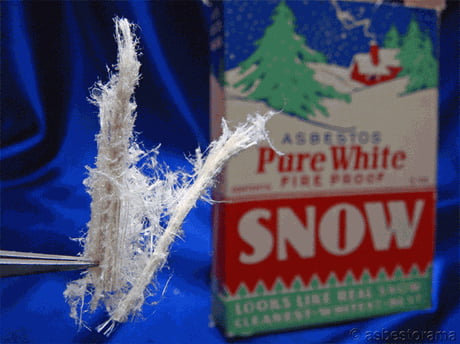The History of Asbestos
It is surprising how many of the general public do not know what asbestos is. Of those that are familiar, with the word it is again surprising how little they understand of the danger it poses and the actual damage it has wrought even in our modern society. Still those who do know what asbestos is, how dangerous it is, and the damage it has done do not typically understand why asbestos was ever used in building materials.
Shocking to most who hear it, asbestos has actually been mined and used by humans since at least 4,500 BCE. We know this because we have found ancient cooking utensils and cookware that contain the mineral. This archaeological find introduces the first characteristic of asbestos that has been extremely useful to humans for a very long time, it is a fantastic heat insulator.
In fact, it is so resilient to heat that it was eventually discovered to have a significant resistance to open flames. The word ‘asbestos’ comes from the ancient Greek ἄσβεστος, meaning “unquenchable” or “inextinguishable” which reflects the use of asbestos minerals in the crafting of candle wicks. Asbestos was ideal for creating candle wicks because it would not burn up while on fire.
It is interesting to note that the name ‘asbestos’ is a misnomer. Our usage of the word comes from the old French adaptation of the Latin term for the mineral, which was where the mix-up happened. The ancient Roman writer Pliny the Younger mistakenly transliterated a term that he believed the Greeks used to refer to asbestos, when in fact that term was used by the Greeks to refer to a different mineral.
The true Greek term for asbestos was αµιαντος, translated to “amiantos”, which means “undefiled” and was named such because of the observation that it was not marked in any way when thrown into a fire. Many languages based their word for asbestos from this correct Greek term, which is why in languages such as Portuguese asbestos is called “amianto”. Indeed, even in English asbestos was first called “amiant”, but the usage was superseded by the French-based “asbestos”.
From the etymology of the word itself it is clear that the identity of asbestos was, and is, closely tied to it’s ability to interact unscathed with fire. One of the most disturbing uses of asbestos in modern society was its use in creating fake snow. The product was made entirely of asbestos in it’s pure mineral form, depicted below:

A famous use of asbestos snow was during the filming of the 1939 classic “The Wizard of Oz,” There is a scene in the movie where snow, made from asbestos, falls on Dorothy and her friends, awakening them from a spell cast by the Wicked Witch of the West.
Ironically, asbestos was used as a fake snow product because it was thought to be a significant safety innovation. The major problem with any sort of finely-ground substance being scattered about is that it becomes highly flammable as a result of exponentially increased surface area. Remember why asbestos has been popular since ancient times? That’s right, It’s fire-proof!
In a similar vein of reasoning, the building material and construction industry took note of how useful asbestos was for adding a degree of fire-resistance to otherwise very flammable materials. This is why the materials that we tend to find that exhibit high concentrations of asbestos fibers include paper backings for vinyl flooring, or paper based tape used to seal joints in various mechanical systems.
While the history of asbestos is long and storied, we hope that this article has given some perspective on why asbestos was ever used in building materials. More than anything, it is interesting to learn the history of this dangerous material. However, telling its story does actually serve a purpose: it increases our collective awareness of asbestos. Knowing more about asbestos affords us more opportunities to bring it up to the public and in turn provides us with more opportunities to discuss the dangers of the mineral and why we must be diligent and careful when dealing with it.